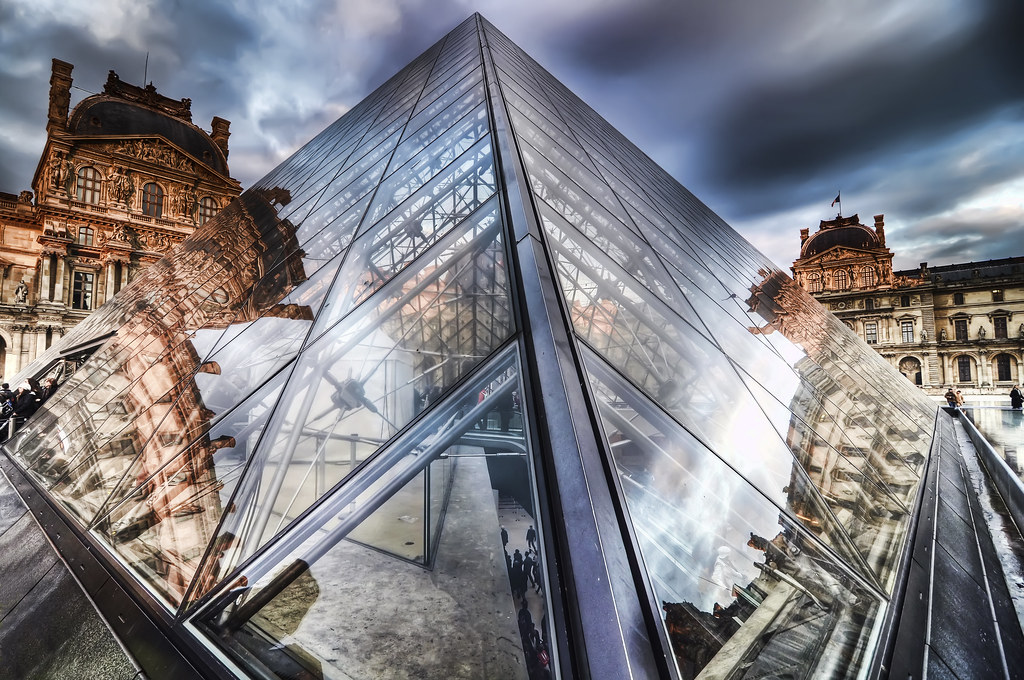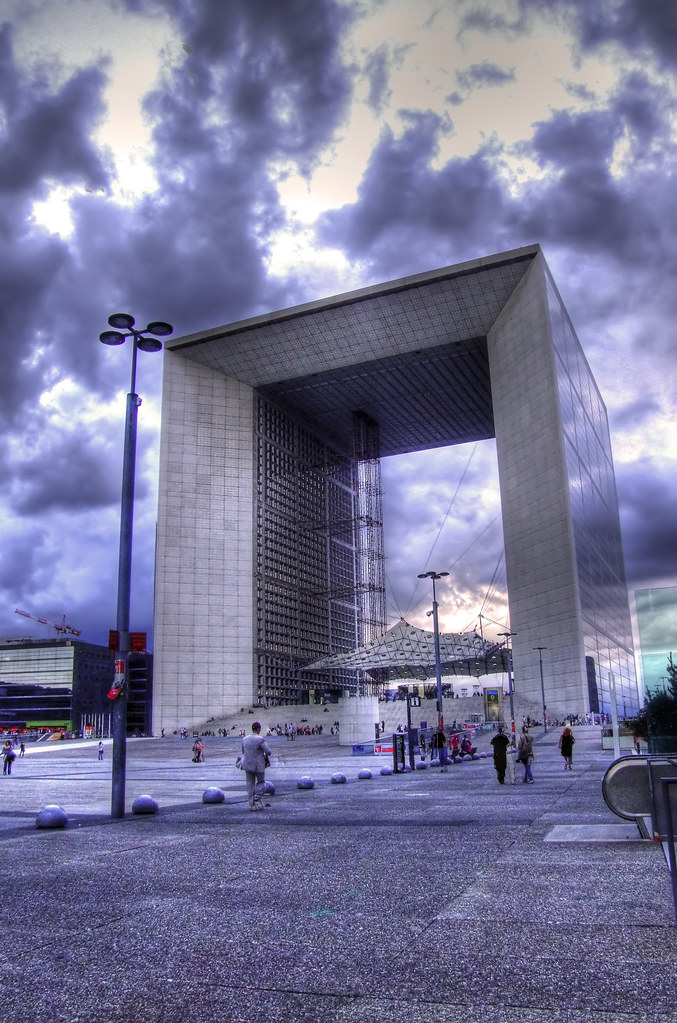In my last post I talked about some tips on how to properly set up your gear and software to make HDR/Tone Mapped images. Continuing that HDR photography tutorial, I will talk briefly about how to look for scenes that will be good in HDR.
You cannot simply apply the technique to any kind of scene. For HDR, you have to look for scenes with a a very wide light dynamic range, for things that’d be otherwise impossible to shoot normally. If your scene is not appropriate, the results will be ugly, dull and boring. Example: clear skies. When you have clear skies, the Tone Mapping algorithm will usually break havoc if you exaggerate and create a very dull grayish sky in your final image, like in this shot of the Saint Eustache church, in Paris:
The good thing here is that I have a lot of bad images from when I was learning this, so I can also teach you how to not do things by example. 🙂
Also, when you have a balanced light shot, you may end up with weird light balance after you tone map the image if you overdo the effects, like in this shot of the Reichstag, in Berlin:
So, the first rule is to look for great dynamic range. Like an against the sun shot, for instance. We all know that if we measure the light from anywhere near the sun (or any other light source), the non-illuminated parts of the scene will be underexposed. And if we measure on those parts, the sky (or anywhere near the light source) will be overexposed. So, this is a good candidate for HDR, because it has a wide dynamic range. An example is the shot below, in which I can have the sun between the columns and still have the Lincoln Memorial perfectly exposed.
Another typical use of HDR is to take advantage of a cloudy sky to create dramatic scenes. In this case, you have to create a tone mapped image which privileges light contrasts, like in this shot of the Grande Arche de La Defénse, in Paris:
Please note that not all cloudy skies will do. It needs to feature some light contrasts, otherwise the end result will be like processing an image of a clear sky. So, by now, you may have noticed a pattern here: we’re looking for great light contrasts. Almost any will do, although some will work better than others. Another thing to look after is reflections, like in the first photo of this page (the Louvre pyramid). The look way more pronounced in a HDR/Tone Mapped image.
So, here you go… you have now the basics to start creating some HDR images. Remember: if it doesn’t fit the criteria, don’t do it. For most images, we don’t need HDR! So choose carefully and happy shooting!




